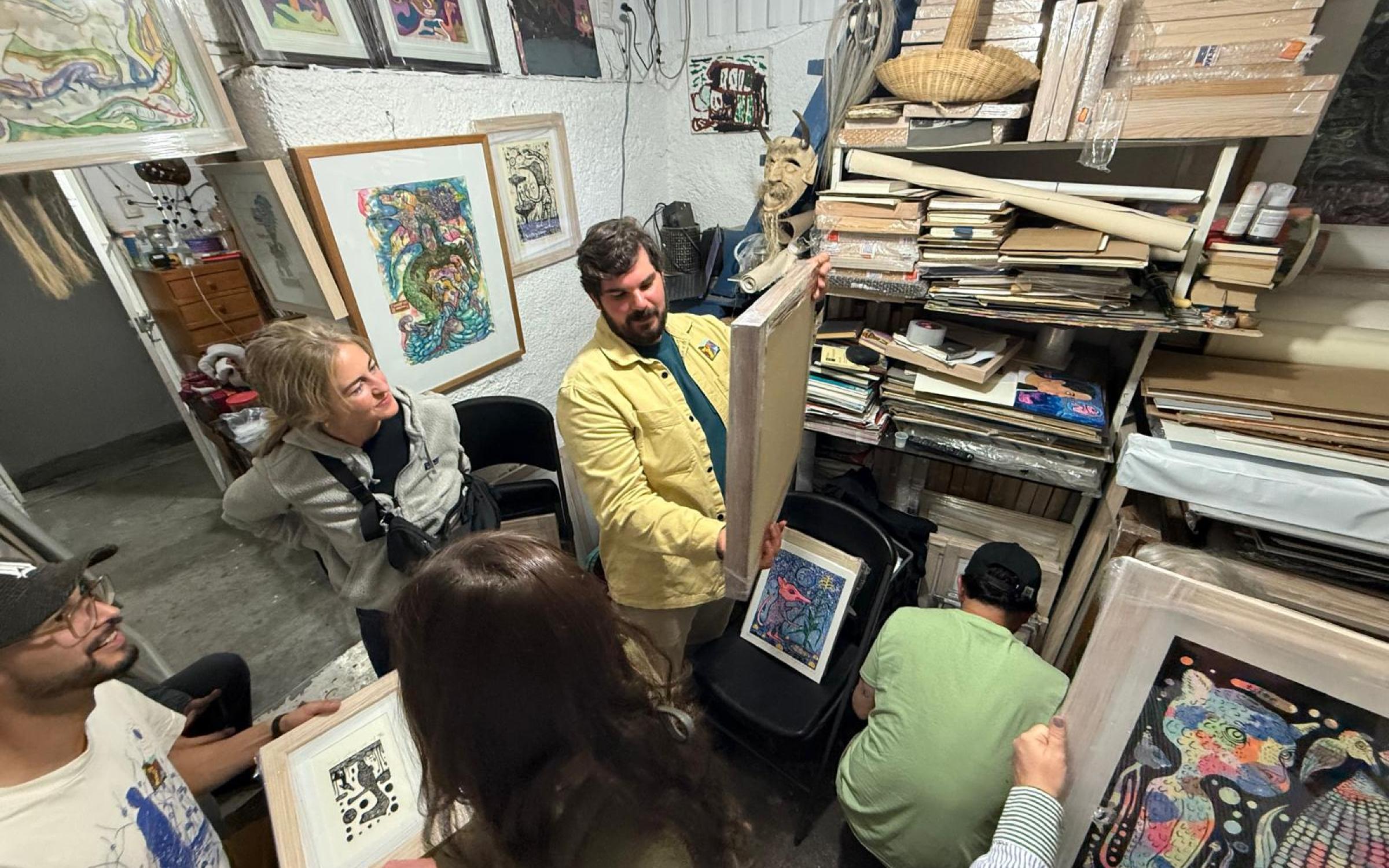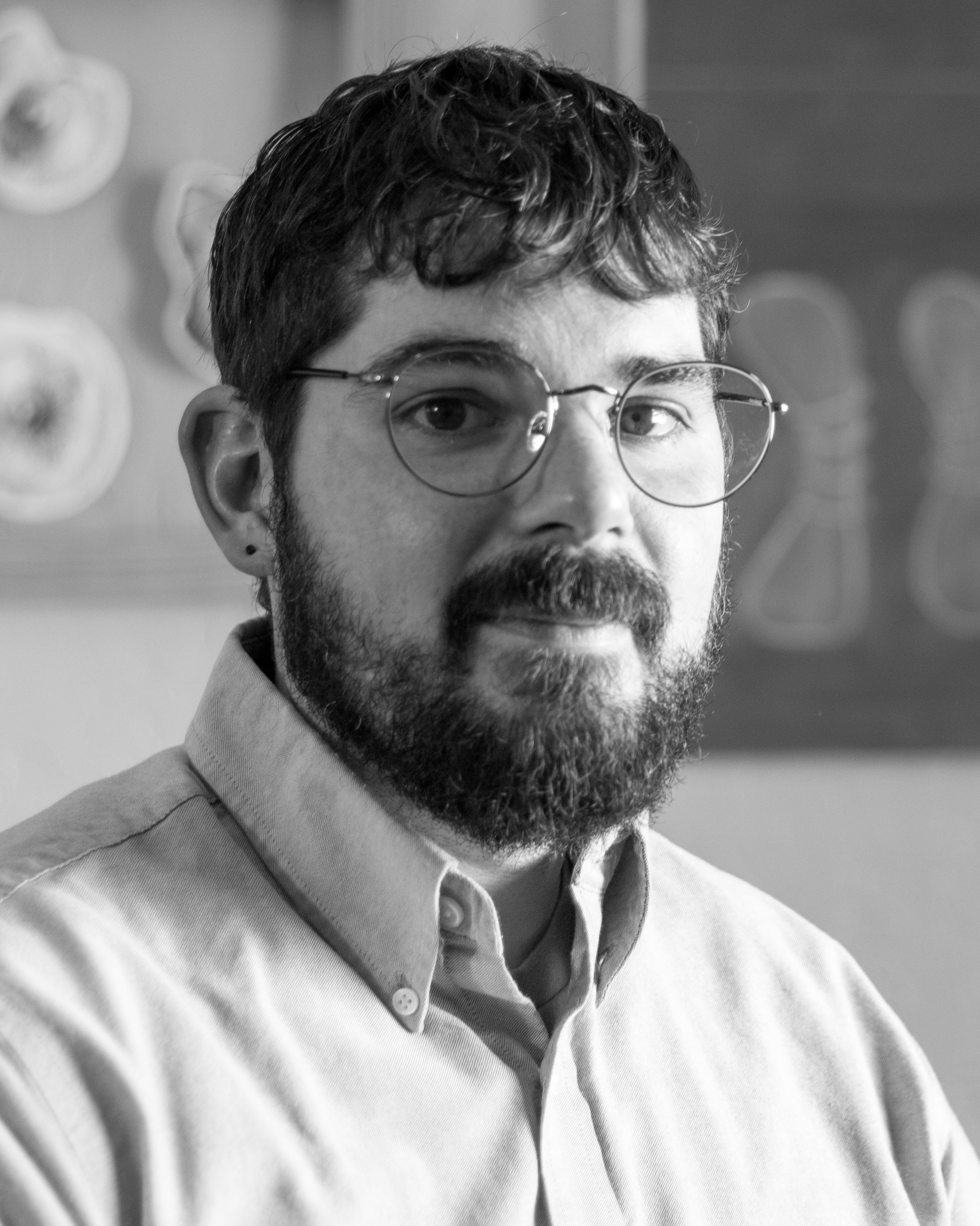
The following is a correspondence interview with Peter Hay, the guest curator of Relative Truths, conducted by J. Attridge.
Relative Truths is the latest in a series of exhibitions featuring the work of contemporary artists who are faculty of the University of Utah Department of Art and Art History. The exhibition will be on view at the Utah Museum of Fine Arts September 26, 2025–January 4, 2026. It will feature over 30 new works by faculty artists covering a vast variety of mediums, styles, and subjects. Peter Hay was selected in 2024 to curate this special exhibition and has been working with the UMFA and University faculty to select works and develop themes that bring the exhibition together in a larger context.
Peter Hay is the Visual Arts Manager at the Utah Division of Arts & Museums and Associate Director of PROArtes Mexico with experience as a cultural programmer, educator, and artist. Peter previously worked as the gallery manager of Modern West Fine Art in Salt Lake City, exhibits director of Durango Arts Center, art instructor with Pueblo Community College, artist/owner of Studio & Gallery in Durango, Colorado, and director of development and public relations for Living Arts of Tulsa, Oklahoma.

Tell me a little bit about yourself. What professional and life experiences have led to your current positions?
In a somewhat unexpected way, I landed a job at a contemporary art center as development and public relations director shortly after completing my MFA. Working for Living Arts of Tulsa during those years turned out to be the best thing that could have ever happened to me, even though at the time, all I thought I wanted to do was make art and teach. Steve Liggett, the artistic director, took me under his wing and taught me a tremendous amount about arts administration and curation, and expanded my ideas around what art can be from a holistic community wellbeing perspective. It was those early years in my art administration career that I truly began to develop a curatorial interest and connect with brilliant artists from across the USA and abroad. Since then I have organized and curated dozens of exhibitions, launched festivals, helped artists build their careers, created an international arts residency program, etc. And made some art here and there. A solid art education, plus that particular opportunity and mentorship from Steve at Living Arts, launched me down the path to where I am now as associate director of PROArtes México, visual arts manager of Utah Arts and Museums, and guest curator of Relative Truths.
What is the faculty exhibition?
Relative Truths is a selection of artwork created by the faculty of the University of Utah Department of Art & Art History. Nearly all of the faculty have artwork included, and the UMFA has been hosting an exhibition such as this on a triannual or biennial basis since at least the 1960s. The U of U has been a cornerstone for the arts in our region since its formation in 1850. Since 1948, when Avard Fairbanks served as the first dean of what was then called the College of Fine Arts, the Department of Art & Art History has been a center of creative and artistic inspiration and innovation. Many of Utah’s most influential artists have been part of its faculty, past and present. This exhibition is our opportunity to experience artwork by foundational members of our creative community in the Salt Lake City area.
What does that mean to be a curator? What has the job of curating the faculty exhibition Relative Truths entailed?
‘Curator’ historically refers to a person tasked with caring for a place or a collection. The term has now been embraced commercially by popular culture, and you can now find curated selections of nearly anything. My role in this exhibition was to carefully select the artwork which I found to be most critically engaged or contributed to a greater and cohesive whole of an exhibition and do my best to provide some greater context for the artwork or small bits of information that might help the visitor glean more meaning from their experience visiting the gallery. In a way, being a curator for this particular exhibition, and maybe more broadly, was to be a thoughtful liaison of sorts between artist and institution and artwork and museum visitor.
How did you choose the works that would be on view, and how did you identify the themes of the exhibition?
The artwork in Relative Truths is thematically and materially broad, yet there are throughlines. As I reviewed the submissions, I tried to pay close attention to the ideas the artwork evoked. Satire, wit, questions of truth and authorship, metaphorical and allegorical use of materials, melancholy, and nostalgia rose to the surface.
What are some challenges you’ve encountered in the context of this particular exhibition?
There was so much artwork to consider and not enough space to show it all. That is always a challenge with this type of exhibition. Some of the artists in the exhibition make very large works, and they just could not fit in this context. I encourage everyone to use the artwork in this exhibition as a starting point for knowing the creative practice of these artists. It is just the tip of the iceberg. Please research their work, look up their websites, and galleries.
What about this exhibition, or your vision of this exhibition, do you find exciting or satisfying?
The artists in this exhibition are well known in their respective fields, and have been in many shows, or have patronage nationally and internationally. Seeing their work all together in one place is exciting for me. And of course, I truly enjoy art as object and concept exploration. There are some pieces in the show that have satisfying material play and rich color. There’s a heft to the world, and defusing that thoughtfully with humor and wit helps keep us engaged and hopeful - or at least puts a smile on our face.
What do you hope visitors will take away from the exhibition?
I hope visitors leave with questions, new knowledge of craft or art-making processes, and their perception of the world in relation to our community expanded. Like many past generations, we’re living at a time of straddling old technology and major advancements. I hope visitors will consider this while in the gallery and after they leave. What is the artist's role in navigating new technology?
Is there anything else you’d like to let the readers in on?
Art is meant to communicate, stir feelings and thoughts, but this requires emotional and mental space. I would like to encourage approaching this exhibition one artwork at a time, and each with an open mind. What I mean by this is clearing your mind and heart and beginning with a childlike curiosity. Investigate each artwork as its own little world. Ask yourself about the materials, color, texture, symbols, shape, studio process, etc. These attributes all hold meaning that you are able to determine for yourself. And then consider the artist and their intent. Maybe the title or the way they described the materials they used will help inform what their intention was? The world is so fast-paced. I’m inviting you to slow down and gift yourself an intentional, in-person experience.
Stay tuned and keep an eye on the future exhibitions page for exciting announcements and join artists, curators, and community members to celebrate the joint opening of Relative Truth and salt 17: Adama Delphine Fawundu September 26, 2025!
